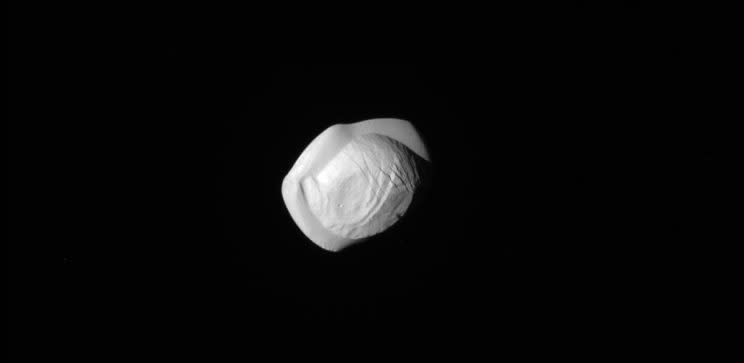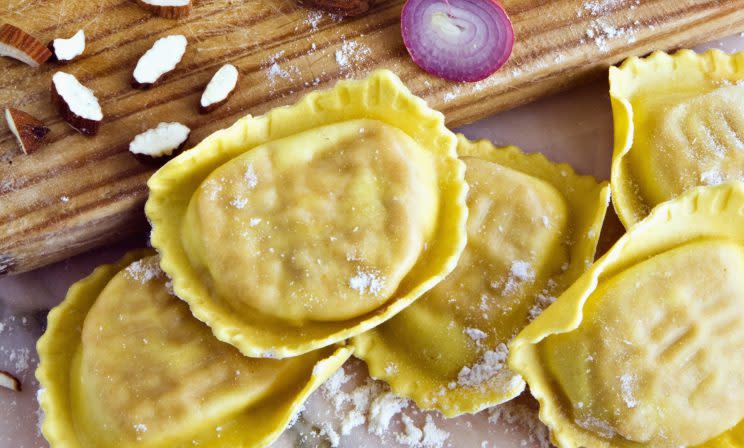NASA images reveal strange shape of Jupiter’s moon Pan - and it looks just like ravioli

The closest images ever taken of Jupiter’s moon Pan have revealed a bizarre and unexpected shape.
Rather than being a spherical satellite, the tiny moon looks more like a ravioli-shaped piece of pasta.
The surprising images were taken by NASA’s Cassini spacecraft this week during a flyby at a distance of 24,572 kilometers (15,268 miles) and are the latest in a series of never-seen-before images that the probe has beamed back.
This week, NASA-backed research revealed that potatoes could be grown on Mars, just like in the film The Martian. While Mars is the closest potentially habitable planet to Earth, Jupiter is the next furthest away in our solar system.

Pan is the second innermost moon of Jupiter and was discovered in 1990 following analysis of images from NASA’s old Voyager 2 space probe.
It was was named the following year, after the mythological god of shepherds, Pan.
The moon has previously been described as walnut-shaped but has not been pictured in such detail until now.
The images will help NASA scientists to characterize the shape and geology of the small moon.
The unmanned Cassini spacecraft was first launched in 1997 and arrived at Saturn in 2004.
MORE: NASA-backed study says growing potatoes on Mars might actually work
MORE: Facebook launches Snapchat Stories-style Messenger Day with disappearing photos
Since November last year, Cassini has been performing flybys of Saturn’s rings, beaming back never-seen-before images.
The probe is due to be destroyed when it plunges into Jupiter’s atmosphere in September, after its fuel resources finally run out.



